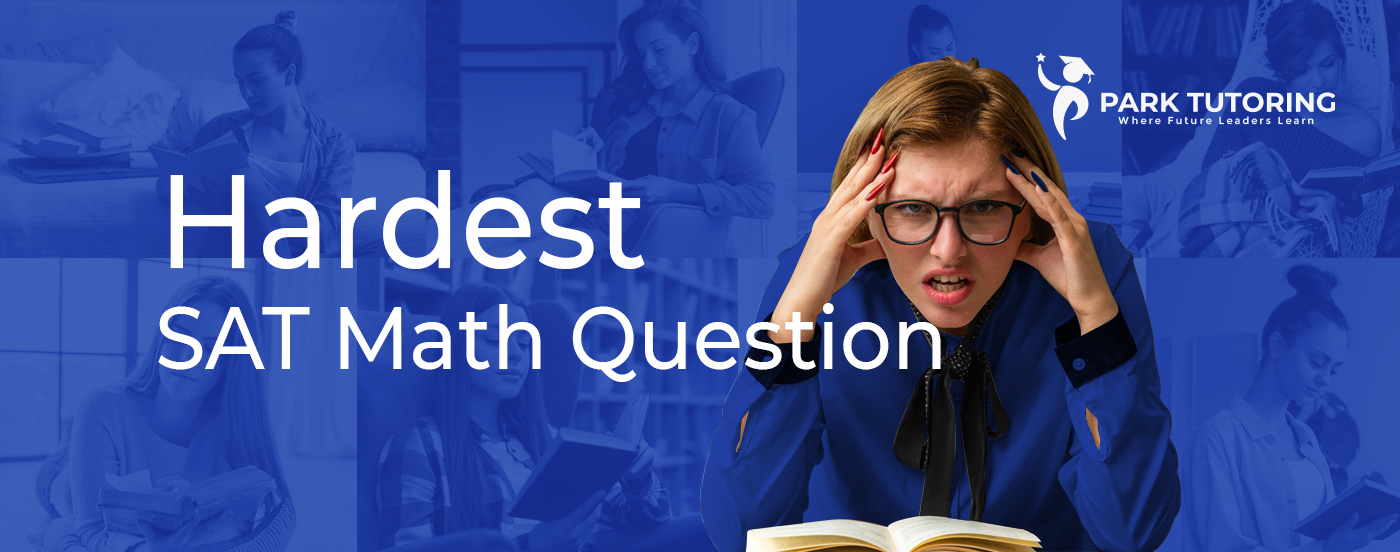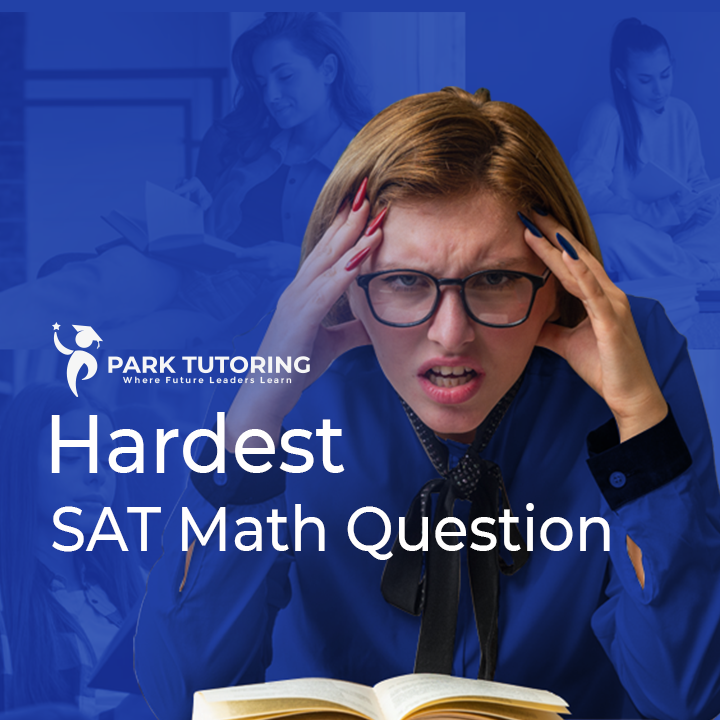Getting ready for the SAT can feel overwhelming, especially when you run into the hardest SAT math questions. These are the problems that usually show up near the end of the section, the ones that make you pause, reread, and wonder if you studied the right material. The truth is, you probably already know the math. What makes the question so difficult is how they combine topics, hide shortcuts , and push you to think in new ways while the clock is ticking,
So here’s a guide that breaks down why these problems feel so challenging while showing you the example of the hardest ones, and walks through step-by-step explanations in plain language. If you ever felt stuck on a math problem and thought, How am I supposed to solve this?, you’re in the right place.
Why Are the Hardest SAT Math Questions So Tricky?
The hardest SAT math sections usually appear toward the end of each math portion. The College Board structures the test so that questions gradually increase in difficulty. This means the first few problems are often straightforward, while the last one requires more time and deeper thinking.
There are a few reasons why these questions feel so tough:
- They combine multiple concepts in a single problem.
- They use unusual wording to confuse you.
- They sometimes hide a simple solution behind complicated numbers.
- They expect you to manage your time wisely under pressure.
When students see these problems without the right practice, they freeze. That is why working through SAT math practice test materials is so important. It helps you see the patterns before test day.
Example 1: Algebra
Question:
If 2x+ 3 = 11, what is the value of 4x + 6?
Step 1: Solve for x.
2x +3 = 11
Subtract 3 from both sides: 2x = 8
Divide by 2: x = 4
Step 2: Plug into the second expression
4x+ 6= 4(4) + 6 = 16 + 6=22.
Shortcut: Notice that 4x + 6 is exactly double 2x + 3. Since we already know 2x+ 3=11, we could just double it to get 22 without solving for x.
Why it is hard: The test makers know students will waste time solving for x instead of spotting the shortcut. This is a classic example of how the hardest SAT math questions are not always about advanced math. Sometimes they are about advanced math. Sometimes they are about seeing patterns quickly.
Example 2: Geometry Question
Question:
A right triangle has legs of length 5 and 12. What is the length of the hypotenuse?
Step 1: Recognize the Pythagorean Theorem
The formula is a2 + b2= c2, where c is the hypotenuse.
Step 2: Plug in the numbers.
52 + 122 = c2
25 + 144 = c2
169 = c2
Step 3: Solve for c.
c = 169 = 13
Why it is hard: On the actual test, the numbers may be large, or the problem may be hidden inside a word problem. You may be told the triangle is inside a rectangle or asked about area instead of side length. Practicing these variations during SAT math preparation builds the flexibility you need.
Example 3: A Hard Word Problem
Question:
A concert hall sells tickets for $20 each. If the hall needs to make at least $3,000 to cover costs, what is the minimum number of tickets they must sell?
Step 1: Write an inequality
20x 3000, where x is the number of tickets.
Step 2: Solve for x.
Divide both sides by 20 x 150.
Answer: The hall must sell at least 150 tickets.
Why it is hard: Many students confuse inequalities with equalities. They might mistakenly say 149 tickets would work, but that would not meet the cost requirement. Paying attention to words like “at least” or “no more than” is crucial in SAT math practice test work.
Example 4: Probability
Question:
A bag contains 5 red marbles and 7 blue marbles. If one marble is chosen at random, what is the probability it is red?
Step 1: Write total outcomes.
There are 5 + 7 = 12 marbles in total.
Step 2: Write favorable outcomes.
There are 5 red marbles.
Step 3: Write the probability
512
This means if you randomly draw one marble, the chance it will be red is 5 out of 12.
Why it is hard: The SAT often hides these problems in longer wording, such as “if two marbles are chosen without replacements.” That is where practice helps you stay calm and break the problem down step by step.
Example 5: System of Equations Question
Question:
Solve the system of equations:
2x + y = 10
x - y = 2
Step 1: Add the Equations together.
(2x + y) + (x -y ) = 10 +2.
This simplifies to 3x = 12.
Step 2: Solve for x.
x = 4.
Step 3: Plug into one equation.
If x - y = 2, the 4 - y = 2.
Subtract 4 from both sides: -y = -2
So y = 2
Answer: The solution is ( 4,2 )
Why it is hard: Systems problems often appear worded in terms of real life, such as tickets, prices, or distances. Students may panic when they see too much text, but the process is always the same: combine equations, isolate variables, and solve step by step.
How to Approach the Hardest SAT Math Sections
The most difficult questions on the SAT are not only about math skills. They test your ability to stay calm, manage time, and think flexibly. Here are some ways to handle them that go beyond basic test-taking tips:
1. Know when to move on: If you have spent more than a minute and a half staring at a problem with no progress, skip it and return later. Many top scorers do this to avoid losing time.
2. Use smart guessing: If you can eliminate even one or two answer choices, your odds of guessing correctly improve a lot. Never leave a question blank, since there is no penalty for wrong answers.
3. Work backward from the choices: Sometimes it is faster to plug the answer options back into the problem than to solve it from scratch. For example, if the question asks for a value of x, testing the choices can lead to the solution in less time.
4. Calm your nerves during the test: The hardest problems are often the last ones. By that point, many students feel drained. Take a deep breath, reset your focus, and remind yourself that these problems use math concepts you already know.
5. Practice “shortcuts in action.”: For instance, if a question asks for the value of 4x + 6 and you already solved 2x + 3 = 11, you can just double 11 instead of redoing all the algebra. Recognizing patterns like this can save precious minutes.
The hardest SAT math questions are less about raw difficulty and more about how you respond under pressure. By practicing these strategies, you can walk into the test knowing you have tools to fall back on when problems look intimidating.
Tools and Resources to Make Math Easier
If you want to succeed, you need consistent SAT math preparation. Here are some useful tools:
- Official SAT Study Guide: Includes real past questions.
- SAT math practice test websites: Many offer free timed drills.
- Video explanations: Helpful for visual learners.
- SAT tutoring: One-on-one help that targets areas that need improvement.
Working with a tutor can be a game-changer. Tutors can explain why you missed a problem and teach strategies that fit your learning style.
How Can We Help?
The hardest SAT math questions often leave students feeling frustrated, but they do not have to. At Park Tutoring, we take these problems apart step by step and show you the simpler path forward. Our tutors focus on building both skill and confidence so you feel ready when the real test begins.
You will get a study plan that fits your needs, timed practice that mirrors the exam, and feedback that highlights where you can improve. With guidance from tutors who know the test inside and out, you can walk into test day prepared and confident, even when the questions look the toughest.


